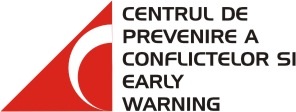Data for the fourth quarter of 2008 indicate that the Romanian economy has started to decelerate, and the question is whether we are in for a soft landing or a hard landing. The decrease of the growth rate is unexpectedly severe (6.2%), and figures are consistent with the decrease in the revenues collected to the state budget in the first two months of the year, i.e. by 8.68% and 8% respectively. If this rate is maintained, we can expect a severe fall, by around 10%, which would take the Romanian economy back to 2007, reversing all the gains of 2008.
These decreases in revenues collected to public budgets actually indicate larger drops in turnover, and the report on the first quarter may well reveal a 9-10% fall of the GDP, in an optimistic scenario. If we look at the growth rate in Q4, we see that it was generated by constructions and agriculture (in the former case by means of a number of projects being finalised, and in the latter of the crops in October / November), and their contribution in Q1 is generally small. Retail also carried on a slight (and rather mechanical) growth, most likely due to Christmas shopping.
A 10% contraction in Q1 will be rather hard to recover in Q2; instead, we should expect the decrease to continue (hopefully, at an equally slow pace). Since it is March already and activity shows no sign of restarting, prospects are hardly optimistic, and chances are the recovery will be delayed to some point in Q3. Under these circumstances, a 1% drop of GDP turns into an optimistic scenario, with 10% as a more realistic approach. Which would not be a disaster, but virtually a return to 2007.
Even with the same deceleration rate as in Q4, 2008, we would still have a -4% contraction, although the decrease is bound to speed up, given that January and February are weak months anyway (Q1 only contributes 16% to the GDP). Moreover, the deceleration pace will likely be consistent with the decrease in revenues collected to the budget, so a more accurate forecast would be -8-9%. In annual terms, the Q1 decrease will induce a -2% of GDP drop, which should be offset in the next three quarters. But since everything around keeps dropping, and the emotional impact severely constrains the demand, prompting even the better-off (companies, as well as individuals) to slash spending, I can see no way of reversing this trend in the medium run.
Does Romania need a loan? It does, first of all in order to regain its foreign credibility, particularly in relation to rating agencies, and only secondly for financial reasons. But if we choose to take the terms of this loan seriously, it would kill the Romanian economy. I need only mention the World Bank’s nonsensical request to privatise the energy sector. Fortunately, Romanian authorities have never stood out in their compliance with IMF requirements, and chances are they won’t do it this time either.
The President’s behaviour, as epitomised by his address in Parliament to announce the need for a foreign loan, clearly shows who actually heads the government; and this raises certain questions with respect to this year’s presidential election, as the economic crisis is, among others, the perfect argument for not keeping irresponsible electoral promises, and the agreement with the International Monetary Fund—the perfect excuse for some unpopular measures that must be taken in an electoral year. The IMF (and later, EU) have always been the perfect excuse for policy-makers to impose any measure and dismiss criticism. “This is what the IFM requested” ends any protest. But the tough terms imposed by the Fund will never guarantee more efficient public spending, or increased administrative efficiency, that is, precisely what the Romanian economy actually needs. We are yet to see whether the electorate will once again be willing to accept this excuse and give Traian Băsescu another five years at Cotroceni. With or without a safety belt.









